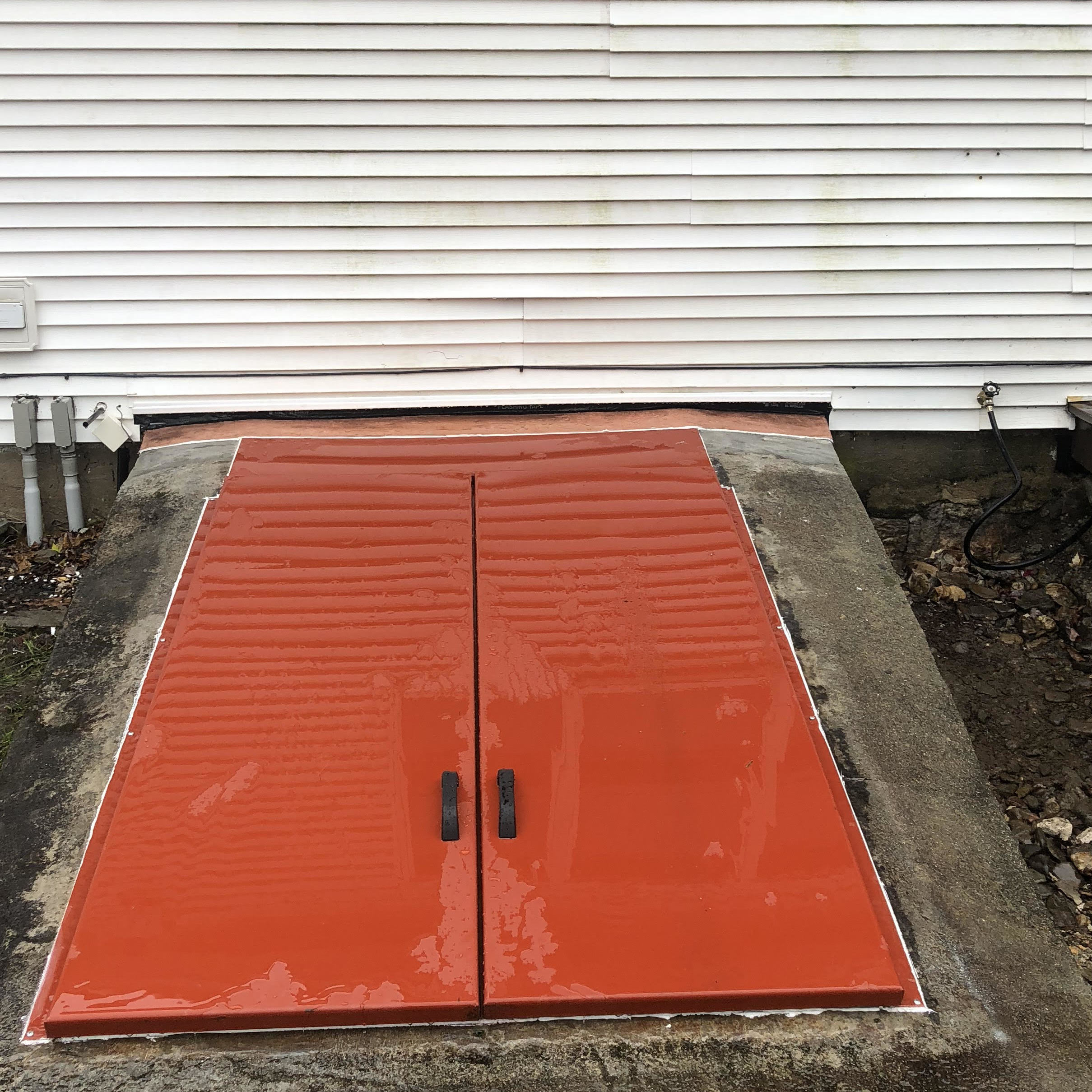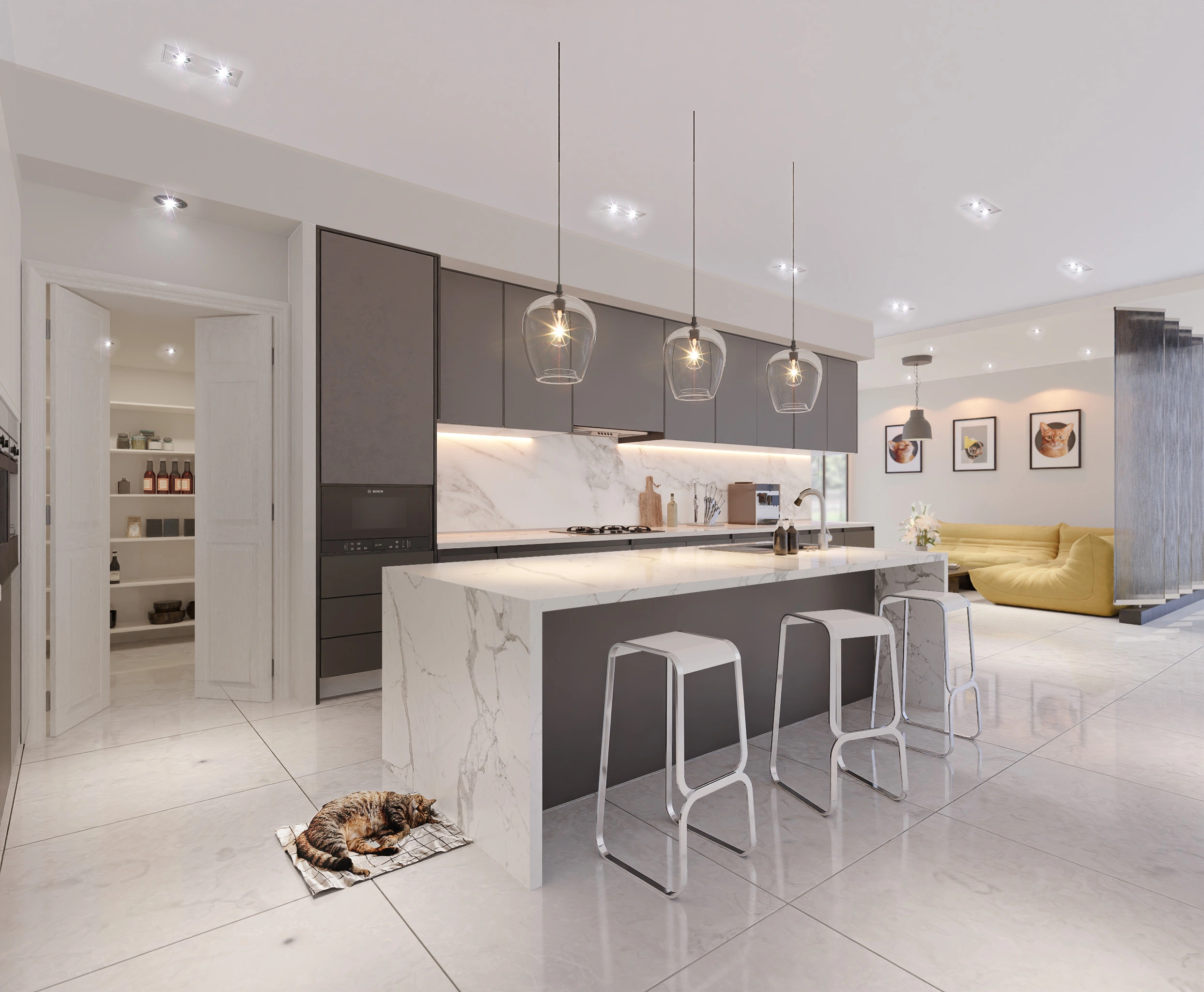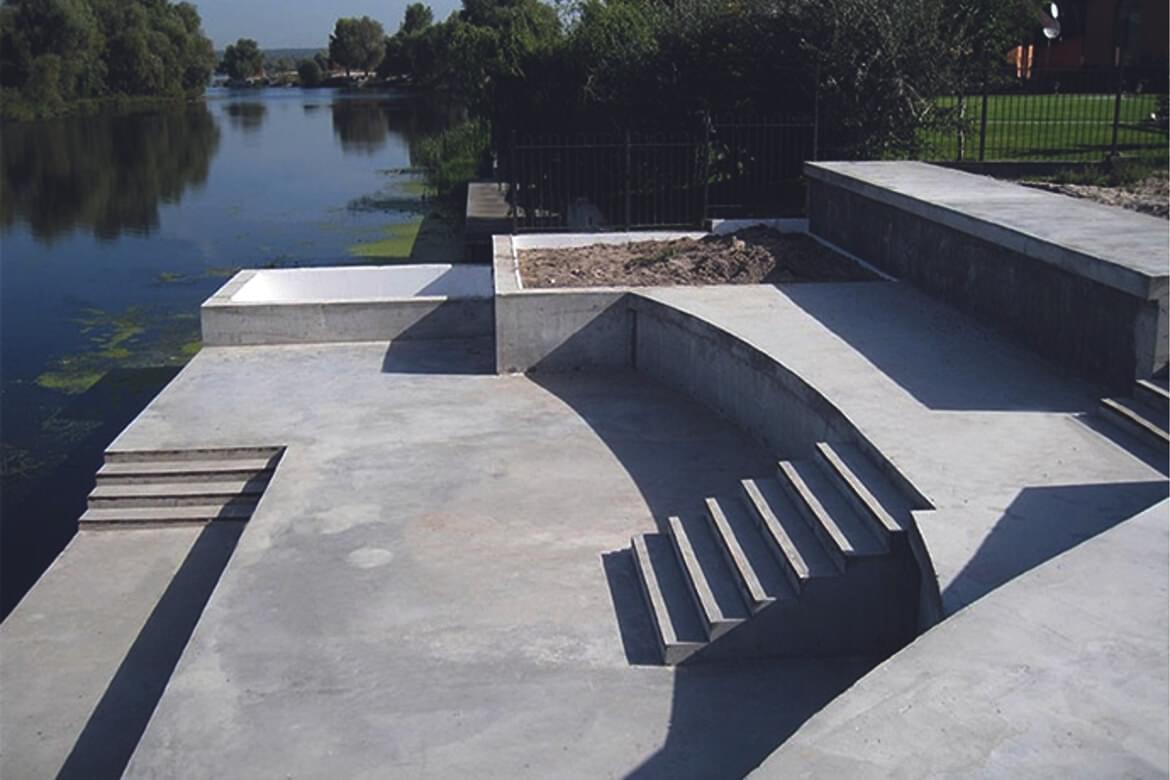Bulkhead on Lake Livingston: Creative Ideas for Modern Interiors
Exploring the Numerous Uses Bulkhead Structures in Modern Style
Bulkhead structures play a considerable role in contemporary architecture, serving both practical and aesthetic objectives. They can define rooms, enhance storage options, and boost lights. In commercial settings, they function as prime focus that reflect brand name identification - Bulkhead on Lake Livingston. Additionally, their integration commonly sustains audio management and lasting techniques. Understanding the complete range of their applications exposes much regarding contemporary layout fads and individual experience. What ingenious uses bulkheads might arise in the future?
Specifying Bulkhead Frameworks
Bulkhead structures play an important duty in modern-day architecture, offering as vital elements in different structure layouts. These frameworks are normally defined as raised ceilings or platforms, often utilized to conceal mechanical systems, electrical wiring, or plumbing. Bulkheads can be located in both property and industrial setups, where they supply a seamless blend of functionality and aesthetics. Their layout can incorporate illumination components and various other attractive components, boosting the total aesthetic allure of an area.
Typically created from products such as drywall, steel, or wood, bulkheads can be tailored to fit the architectural design and demands of the building (Bulkhead on Lake Livingston). They offer not only to hide unsightly framework but additionally to produce defined zones within open rooms. By taking care of the flow of a space, bulkheads contribute to the spatial company, making them a substantial aspect of contemporary building practice. Consequently, their definition envelops both practical and visual dimensions
Practical Applications in Residential Style
Bulkhead structures play a necessary role in household design by assisting in space optimization methods that take full advantage of useful locations. Furthermore, they contribute visual design elements that enhance the visual charm of living spaces. On top of that, these frameworks provide important architectural assistance remedies, ensuring the honesty and security of the home.
Area Optimization Techniques
As contemporary household designs progressively focus on reliable use of room, ingenious techniques arise to maximize functionality without giving up looks. One noticeable strategy entails the integration of bulkhead structures, which can define areas while providing vital storage space services. These structures can be employed to develop upright storage units that boost both organization and ease of access. Furthermore, multi-functional furniture, such as foldable tables and convertible sofas, complements bulkhead designs, allowing spaces to adjust to differing requirements. Open up layout better optimize spatial circulation, encouraging flexibility in usage. Including integrated shelving and recessed illumination within bulkheads also adds to a streamlined environment, guaranteeing that every inch of space is utilized efficiently and sympathetically within the general layout.
Aesthetic Design Components

Architectural Support Solutions
In modern residential layout, a reliable structural assistance option is crucial for keeping the stability of areas while enhancing design and functionality. Bulkhead structures play a significant duty in this scenario, functioning as both support and partitioning aspects. They can hide mechanical systems, such as pipes and electric circuitry, while providing support to the ceiling and flooring systems. By strategically positioning bulkheads, designers can produce defined locations within open layout, improving functionality without endangering structural stability. Additionally, these structures can fit lights fixtures, adding to both appearances and practicality. To sum up, bulkhead frameworks are important in household layout, offering versatile assistance remedies that enhance both the functionality and visual charm of living rooms.
Enhancing Visual Appeals in Industrial Rooms
When business areas accept ingenious bulkhead structures, they not just specify physical limits but also greatly boost the total aesthetics of the setting. These architectural elements offer as visual focal points, attracting attention and producing a sense of intrigue. By incorporating varied materials such as timber, glass, or metal, bulkheads can reflect a brand name's identification and objective, adding to a cohesive design.
In addition, the calculated positioning of bulkheads can adjust light and darkness, adding deepness and measurement to otherwise flat spaces. This interplay can change a commercial area into an inviting atmosphere, urging customer involvement. Additionally, making use of color and appearance in bulkhead layout can stimulate details emotions, enhancing the total customer experience. Ultimately, the thoughtful integration of bulkhead structures boosts the visual allure of business areas, making them not just practical however also visually captivating, thus cultivating a lasting perception on visitors.
Acoustic Performance and Sound Management
Effective acoustic performance plays useful content a crucial role in modern architecture, specifically within commercial rooms where sound monitoring is important. Bulkhead structures can greatly improve acoustic high qualities by taking in sound, click this minimizing reverberation, and mitigating noise transfer between locations. These functions are especially helpful in atmospheres such as dining establishments, offices, and cinemas, where clear communication and an enjoyable acoustic experience are critical.
The calculated positioning and layout of bulkheads can help create sound-buffer areas, properly separating loud locations from quieter ones. Materials made use of in bulkhead building, such as acoustic panels and soft surfaces, add to their sound-dampening capacities. Furthermore, the consolidation of bulkheads allows for the combination of sound-absorbing elements without endangering visual appeal. By resolving acoustic performance, designers can develop harmonious environments that improve comfort, boost customer experience, and advertise efficiency, making bulkheads a crucial element in the layout of contemporary commercial rooms.
Incorporating Bulkheads for Efficient Area Utilization
Often overlooked, the combination of bulkheads in building style can significantly enhance area utilization in contemporary structures. These structural components serve numerous sensible objectives, using a way to conceal mechanical systems, electric circuitry, and pipes without endangering aesthetic appeals. By strategically positioning bulkheads, architects can produce defined areas within open layout, thus helping with better company and flow.
Furthermore, bulkheads can integrate storage solutions and lighting functions, optimizing the functionality of otherwise thrown away upright area. In property settings, they may mark zones such as kitchen areas or living locations, while in business spaces, they can enhance the effectiveness of formats by plainly marking pathways and job areas.
Eventually, the thoughtful integration of bulkheads contributes to an extra aesthetically appealing and well organized environment, permitting versatile rooms that can progress with the needs of their residents. This approach not only optimizes space but additionally promotes a much more unified communication in between form and function.
Bulkheads in Public Style

Building Aesthetic Enhancements
While many building components go for capability, bulkheads in public design offer a dual objective by boosting aesthetic appeal. These frameworks often create aesthetic rate of interest through their style, integrating effortlessly with bordering components. By employing different products, textures, and shades, bulkheads can add to a special identification for public spaces, such as flight terminals, museums, and collections. Their critical placement helps to delineate locations, assisting site visitors while including deepness to the general style. Additionally, bulkheads can emphasize illumination, creating vibrant atmospheres that change throughout the day. This visual enhancement not just raises the site visitor experience yet likewise fosters a local color, making bulkheads a vital factor to consider in contemporary public architecture. Overall, bulkheads personify the blend of form and function.

Architectural Assistance Solutions
As engineers seek cutting-edge methods to enhance the structural integrity of public rooms, bulkheads emerge as necessary elements in the style and construction process. These frameworks offer important assistance, especially in locations subject to hefty foot traffic or dynamic loads. By distributing weight equally, bulkheads aid prevent architectural failing while permitting for functional layout choices. In huge venues, such as stadiums and convention centers, bulkheads are usually integrated into the total building framework, making sure stability and safety. Additionally, they can assist in the consolidation of utilities and mechanical systems, adding to the efficiency of area use. Inevitably, bulkheads represent an essential solution in modern public style, enhancing both capability and security in community-focused environments.
Environmental Management Measures
Integrating environmental protection actions right into public style has ended up being progressively vital as urban developers focus on sustainability together with structural support. Bulkhead structures special info serve a twin objective hereof, working as obstacles against erosion and flooding while at the same time improving the aesthetic allure of urban landscapes. Their style often consists of natural components such as vegetation, which can enhance air top quality and give environments for wild animals. Furthermore, bulkheads can be engineered with permeable materials that permit water absorption, reducing drainage and promoting groundwater recharge. This assimilation of ecological considerations not just protects the setting however additionally cultivates area durability versus environment modification. By making use of bulkheads effectively, engineers add to sustainable city development that lines up with modern ecological objectives.
Future Patterns in Bulkhead Design
Emerging patterns in bulkhead design reflect a growing emphasis on sustainability, advancement, and performance in contemporary style. Developers are significantly including eco-friendly products, such as recycled composites and bioplastics, to reduce ecological influence. Additionally, the integration of clever technology is coming to be widespread, allowing bulkheads to serve multi-functional objectives, including power storage and climate control.
In metropolitan setups, modular bulkhead systems are acquiring traction, offering versatility in layout and simplicity of installation. These systems can be adjusted to numerous landscapes, permitting effective area utilization. In addition, visual considerations are developing; bulkheads are currently being made to enhance aesthetic allure, commonly including creative elements that reverberate with local culture.
As environment resilience ends up being a concern, future bulkhead layouts will likely prioritize flood defense and stormwater management, making sure architectural honesty while dealing with environmental obstacles. This shift signifies a holistic method to style that satisfies both environmental obligations and human needs.
Frequently Asked Questions
What Materials Are Generally Used for Bulkhead Building And Construction?
Typical products for bulkhead building consist of concrete, steel, wood, and composite products. These choices give resilience, architectural integrity, and resistance to environmental elements, making them ideal for various applications in construction and design tasks.
Exactly How Do Bulkheads Influence Building Energy Performance?
Bulkheads enhance building power efficiency by offering thermal insulation and lowering air leak (Bulkhead on Lake Livingston). They aid preserve indoor temperatures, thus lowering home heating and cooling needs, eventually resulting in lower power costs and boosted ecological sustainability
Exist Any Type Of Structure Codes Particular to Bulkhead Structures?
Yes, building codes particular to bulkhead structures exist, differing by location. These policies generally address security, structural integrity, and access, making sure that bulkheads meet required standards for building and construction and layout within a given territory.
Can Bulkheads Be Conveniently Modified or Eliminated Later?
Bulkheads can frequently be changed or removed, relying on their design and building. Nonetheless, such changes may need cautious planning and adherence to building codes to guarantee architectural honesty and safety are kept throughout the procedure.
What Are the Prices Related To Installing Bulkhead Structures?
The prices linked with mounting bulkhead structures can differ considerably, normally influenced by products, layout complexity, and labor. Usually, expenditures vary from modest to high, relying on the job's particular requirements and place.
Bulkhead structures play an important function in contemporary style, offering as crucial components in various building styles. Bulkhead structures play a vital role in household design by assisting in area optimization methods that make the most of usable areas. Often neglected, the combination of bulkheads in architectural design can substantially enhance area usage in modern-day buildings. As architects look for innovative methods to enhance the structural honesty of public rooms, bulkheads arise as necessary parts in the design and building and construction procedure. The prices connected with setting up bulkhead structures can vary substantially, typically influenced by products, style intricacy, and labor.